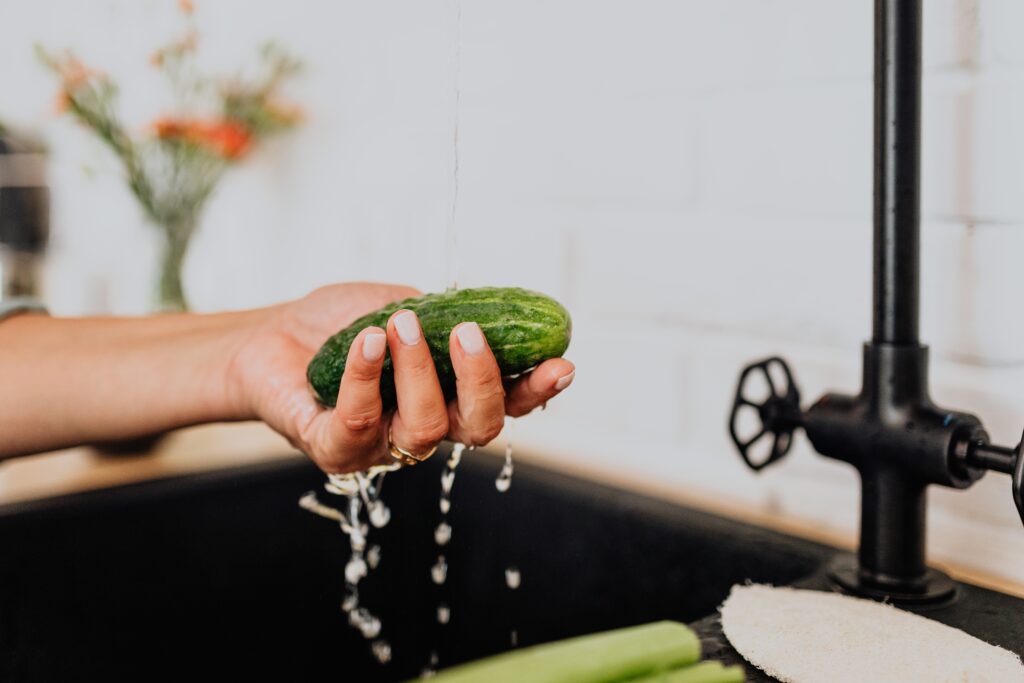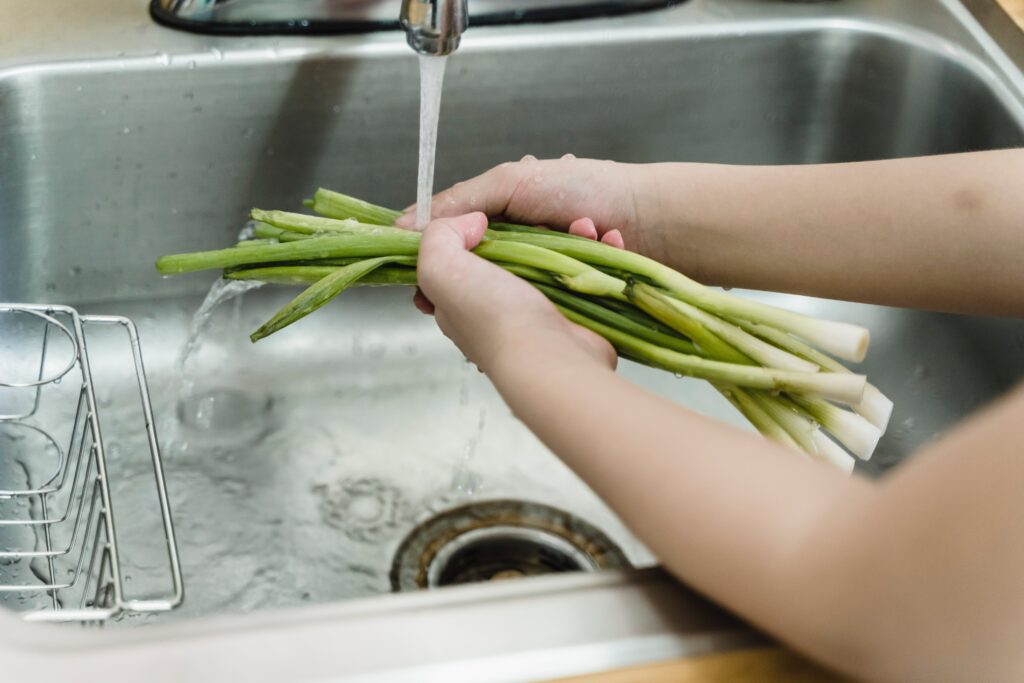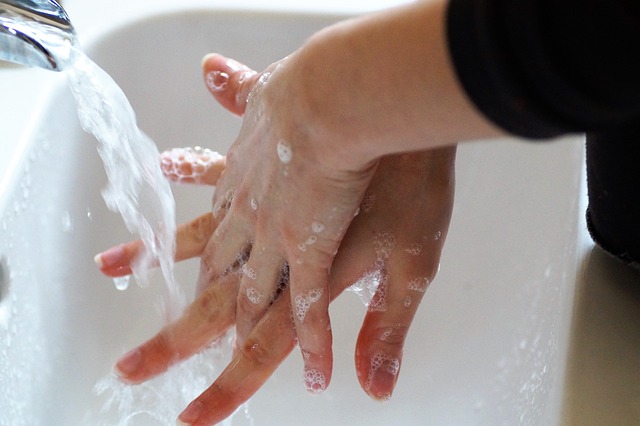Preserving your own food is a great way to enjoy fresh, natural flavours all year round. But before you can get started with preservation methods such as canning and pickling, it’s essential that you first prepare the fresh ingredients correctly. Washing your produce thoroughly is an important part of preserving. This blog looks at why washing fruit and vegetables before making preserves is so important. It also provides some information on the strategies for achieving reasonable hygiene results.

Read on as we dive into why—and how—to clean your produce ahead of making preserves.
Why wash produce ahead of making preserves?
Washing fresh produce is a surefire way to eliminate bacteria and unwanted residue from their exteriors before consuming them. This way you can ensure that any contaminants will not be transferred to the final product.
Failing to do so could result in spoiled produce or other unwanted adverse effects, especially ill-health effects.
Some specific reasons why washing should be done in preparation for preserving fruits and vegetables include the following:
Eliminating visible dirt or debris
Washing fruit and vegetables before making preserves is an important preparation step that should not be overlooked. Doing so eliminates visible dirt, soil, animal waste or debris that may remain after washing in the sink.

Additionally, washing fruit and vegetables can prompt the removal of any packaging such as stickers, plastic wrappings and labels. It also serves to remove exterior waxes applied to them at the store to help retain shelf life. This wax could interfere with the preserving process if not removed ahead of time.
Washing away bacteria, spores and insects
This is a critical step in the process of making preserves. It helps to rid them of any potentially harmful microorganisms. These could spoil the taste or even worse, make someone sick. Bacteria and plant/mould spores found on unwashed fruits and vegetables can introduce toxins that can cause food-borne illnesses. And washing can even help to remove any insects or larvae that have made their way onto the produce. Adhering to washing protocols before making preserves is paramount. Not only will it ensure food safety, but also the preservation of flavour profiles so you’ll get delicious results every time.
Pesticide and fertiliser residue
Making preserves is an enjoyable creative process. It also has the added benefit of making use of any excess fruits and vegetables available in the home. Washing fresh produce can wash away potentially harmful and toxic pesticide and fertilizer residues. These can linger on the products due to intensive farming practices. Crucially, washing off these residues reduces the knock-on health risks associated with consuming these preserves. This is a worthwhile investment in time to care for your own health health and that of your loved ones.
Interrupting food-borne illness cycles – natural and man-made
Proper washing of fruits and vegetables is an essential technique to interrupt food-borne illness cycles. Without washing stored supplies can become contaminated with bacteria or viruses (e.g.Covid, flu and cold viruses amongst others) that can cause serious illness.

Stored fruits and vegetables may pick up contaminants from other sources as well. These can be due to unwashed hands or dirty equipment during handling. Before being sold to you at the grocery store or farmers market, fresh produce is often handled by several individuals. It is wise to assume that not all hands have been disinfected while touching them. Navigating the crowded supermarket aisles or markets can often mean that much of your fresh produce has been exposed to multiple people. Their germs and bacteria through sneezing, coughing and breathing are easily passed onto the produce in the area.
Organic produce should be washed too before using it in preserves. This ensures that as many dangerous pathogens as possible have been eliminated.
Even if you are picking from your garden or your nearest organic pick-you-own farm, you cannot be certain that the products have not been exposed to insects, spores and animal waste residue.
Washing before preserving may take extra time, but it’s essential for ensuring the best end product possible.
Wash ALL produce
Before beginning to make preserves, washing all of your fruit and vegetables is an essential step. This washing should be done regardless of whether the fresh items are store-bought, organic or from your garden. There are many tiny contaminants that you may not be able to see with the naked eye but, can remain on your produce. Although the risk of contaminants in processed soil and manure is low, it cannot be overlooked. Even if your soil quality is up to par and you are using filtered water for irrigation, it’s best practice to clean all fruits and vegetables before eating them. Taking this one simple step can lead to healthier and safer homemade preserves.
Organic farms are incredibly diligent in safeguarding their crops, yet this doesn’t stop the impact from the shopper that touches each apple before choosing one. Despite rigid quality control efforts, there is still a risk of contamination of produce during transportation or when handled in stores. The produce also have natural contaminants due to its contact with insects, their larvae, mould spores and animals. Natural pesticides and fertilisers that are accepted for the growing of organic produce do not mean that it’s good for you and your family to eat. So, wash it!
Even if you choose to peel certain items, ensure that they are thoroughly washed first. This limits the transfer of dirt or bacteria onto the edible portions of your fruits and vegetables.
What to wash fruits and vegetables with
Cold Running Water
This is the most basic way to wash fruit and vegetables. Simply run them under cold water for a few minutes to remove dirt and other contaminants while rubbing with your hands.
Distilled White Vinegar and Water
A simple soak in a mixture of water and distilled white vinegar for 10 minutes. This can help clean produce more thoroughly than just rinsing with water alone. Rinse under running water to finish.
Apple Cider Vinegar Solution
Similar concept as above, but use apple cider vinegar instead. Mix one cup of ACV per gallon of cold filtered tap water. Then submerge your fruits or veggies into this solution for about 10 minutes. Next, washing off with cold running water. Then rinse again with plain water once done!
This method is especially effective for vegetables that have been sprayed with pesticides or waxed
And the rinsing gets rid of any left-over vinegar flavour!
Lemon Juice and water
Mix lemon juice with salt in a bowl of water. Then submerge your fruits or vegetables for about 10 minutes before rinsing off with cold running water.
Hydrogen peroxide(food-grade) and water into a spray bottle
Spray the mixture on your produce (especially those that have waxed skin like apples). The aim is to get rid of any leftover residues. These can be from wax or chemical treatments used when produce is grown commercially, as well as remove other contaminants. Remember to rinse again afterwards.
Salt with water
An inexpensive and uncomplicated method for eliminating certain pesticides is salt water! Make up a bowl/sink of water with salt, mix around and wash off the vegetables in this mixture for 10 minutes before rinsing with clean cold water.
Baking soda with water
Make up a weak solution of water with baking soda. Next, you submerge the fruits and vegetables for cleaning; wash them, then rinse well.
Commercial Produce Cleaners
Some food hygienists have revealed that using commercial produce cleaners is not necessarily any more effective than simply washing your fruits and vegetables with water. Nonetheless, it does continue to be available as an option for preparing produce ahead of eating them.
While some of the above options may leave behind an unpleasant taste or odour if no rinsing happens, the cleaners can sometimes leave behind chemical residue that can be toxic if consumed. It is also not necessarily cost-effective given how often this step will needs to be completed.
Ultrasound cleaners
Ultrasound cleaners offer a convenient and thorough way of washing fruit and vegetables at home. But they aren’t without their drawbacks. Ultrasound cleaning uses ultrasonic sound waves to generate microbubbles. These bubbles break down dirt and other impurities from the surfaces of food. This is especially effective for more fragile fruits and vegetables as the process is a gentle one in itself.
The downside of using ultrasound cleaners is that they can sometimes require special solutions to be used. These can be expensive. That is, aside from the potential cost of repairing or replacing the device itself if it were to break down. Ultimately, if you’re looking for a quick, efficient cleaning solution for your produce at home then ultrasound washing may be your best bet. Just make sure that you consider the costs before taking the plunge.
The benefits of washing fruits and vegetables before preserving them are clear – it helps reduce potential contamination and foodborne illnesses.
Taking a few extra minutes to wash your produce before getting started will make all the difference when it comes to making delicious preserves. So choose a method or combination of methods that suits you and which you can implement consistently as this is where the true powerful impact will lie.
Before and after washing your fruit and vegetables, make sure that you wash your hands and clean your work surfaces
Taking the time to thoroughly wash fruit and vegetables is an essential step for anyone looking to ensure their safety when using raw produce. This process includes washing your hands before and after washing any produce. Doing so will reduce the risk of spreading harmful bacteria, as washing your hands removes any microorganisms that are present on them and prevents them from coming into contact with the food you’re going to consume.

Furthermore, washing your hands is a basic but important step in preventing foodborne illnesses caused by cross-contamination.
It is also a good practice to sanitize the working surface area before and during the process of making your preserves to limit the risk of cross-contamination.
By washing your hands, cleaning work surfaces and washing fruit and vegetables, you’ll be able to create delicious and healthy preserves with less worry about potentially harmful contaminants.
Also, extra precautions should be taken when dealing with unpackaged produce as it usually has higher amounts of dirt and soil than pre-packed fruits and vegetables.
Remember to always store and prepare uncooked raw produce separately from any other ready-to-eat items. To avoid cross-contamination, it is important to use separate chopping boards, knives and utensils for unwashed raw vegetables and ready-to-eat foods. Alternatively, make sure that you thoroughly clean these items in between uses.
It bears repeating: to protect yourself, ensure that you always scrupulously wash your hands both before and after handling raw food items such as fruits and vegetables and other raw ingredients. You then have another reason to treat yourself to some good moisturising hand cream to use later!
The ‘HOW TO’ of washing fruit and vegetables
Preparing
- Prepare the cleaning area. Make sure that surfaces are clean and have containers, colanders, etc ready to make the process smooth and efficient.
- Take your fruits and vegetables out of their containers, then place them on the freshly-cleaned surface.
- Carefully remove any rotten items to avoid further deterioration of the other pieces. (You can wash any separately if you assess that you can cut away a bruised part and still use the item.) Throw rotten or mouldy pieces of fruits and vegetables away immediately).
- Strip off any stickers or labels.
- To ensure thorough cleaning, start with the least soiled items. Additionally, wiping off any excess dirt before washing can help reduce the time spent labouring over each fruit or vegetable.
- Submerge each set of fruits and vegetables separately into their own solutions of the above or thoroughly wash them under a running tap for optimal hygiene.
- Applying a gentle, soft-bristle brush to fruits such as apples or lemons as well as root veggies like potatoes or carrots can help remove residue from their pores. This can also get more out of the creases where contaminants can hide.
- However, with softer fruits such as strawberries, you need to be gentler.
- Make sure that the produce is submerged or covered in a spray version for long enough to have an effect of decontamination.
Rinsing and Drying
- Rinsing – do not forget this step…! While washing with solutions is effective at removing potential contaminants, it also leaves behind a residue. This may not be acceptable and that could affect the shelf-life of the produce if just left. For this reason, it is crucial to rinse all the fruits and vegetables after washing them.
- Unless needed for immediate preparation, it would be wise to air dry them over a clean surfac. This will help remove excess water while also preserving flavour and texture. Options you may consider include leaving them in a colander to drain and dry. Or you can use a clean tea towel/kitchen towel on an oven tray or lining the draining board and let the produce drain and air-dry.
- If you plan to store the produce for a while before using it , it’s best to dry them off thoroughly after washing them. This also keeps them from going limp too easily. Line punnets with kitchen paper that is highly absorbent for ultimate moisture retention of the produce!
Other considerations
- For cruciferous vegetables such as lettuce, leeks, or Brussels sprouts,you may want to peel off an outside layer and then soak them in a bowl of cold water. Carefully swish the vegetables before draining them and rinse them with fresh water for safer consumption.
- You can also use a salad spinner to both soak salad leaves and lettuce and also to dry them out.
- When it comes to deciding if peeling should be done or not, some caution needs to be taken. Areas around the edges and bumps of produce are usually where unwanted contaminants can build up. So it would make sense to peel these sections of fruit or vegetable skin away to ensure safety. Other general peelings can be saved and used.
When should you be washing fruit and vegetables
Washing fruit and vegetables is good, but the important question remains – when is the best time to do this washing? Immediately or just before using them?
Washing your produce immediately after purchasing is recommended. BUT, it is also important to consider how long the item will be stored in your refrigerator. Bacteria can continue to grow during storage, even where you have washed them. So it’s best to wash produce again right before you use it.
Furthermore, pre-washing fruits and vegetables before storing them at room temperature have the potential to make them deteriorate more quickly. If this is the case then washing them just before eating or using them should be better.
If you feel like you just have to wash them as soon as it’s in your kitchen, dry them thoroughly with a paper towel. And then give it another wash for good measure before using or eating it. This way, you can be sure that all of your food is clean and safe to consume.
The take-home message –
Whether organic or conventional fruits and vegetables, developing a habit of washing produce is essential for achieving good food hygiene.
But there’s no need for anxiety or worries about extra work! Just a few minutes of soaking your vegetables or even just rinsing them off under running water can help make the food you eat and serve much safer.